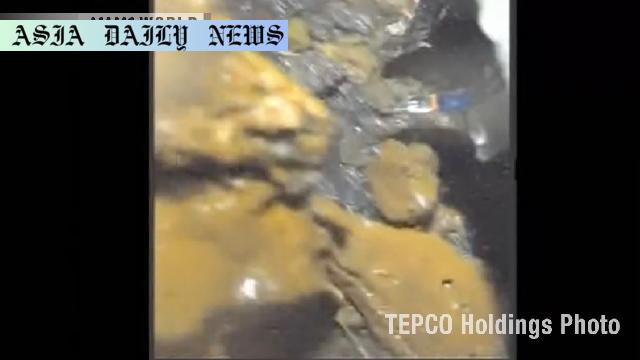Fuel Debris: TEPCO plans second test retrieval from No. 2 reactor, pivotal for Fukushima nuclear cleanup.
- TEPCO is conducting its second test retrieval of nuclear fuel debris at the Fukushima Daiichi plant’s No. 2 reactor.
- Plans include radiation measurement and containment after successful removal of a small sample of debris.
- Removing 880 tons of hazardous debris is a significant hurdle in decommissioning the power plant.

Introduction: The Challenges of Fuel Debris Removal
In the daunting aftermath of the 2011 Fukushima Daiichi nuclear disaster, one of the most pressing and challenging tasks is the safe retrieval of molten nuclear fuel debris from its reactors. Tokyo Electric Power Company (TEPCO), the operator of the power plant, has been exploring methods to address this highly complex and dangerous issue. The recent announcement of their second successful test retrieval from Reactor No. 2 marks a critical step forward in the journey towards decommissioning the plant and transforming its legacy of devastation into a future of safety and renewed hope.
Significance of the Second Test Retrieval
The Fukushima Daiichi plant, hit hard by a tsunami after a magnitude 9 earthquake in 2011, houses three reactors where molten fuel debris still remains. This recent test retrieval follows a successful attempt in November 2022 and involves a specialized device capable of grasping small amounts of debris from inside the reactor’s containment vessel. On Sunday, engineers managed to extract a few grams of debris. While seemingly small in quantity, each successful retrieval marks steady progress. TEPCO has planned on measuring the radiation emissions from the debris to determine worker safety before transferring the sample into a dedicated transport container.
Technological and Human Challenges
The estimated 880 tons of molten debris mixed with fragmented reactor structures poses a greater challenge than most nuclear cleanup operations throughout history. The extreme radiation levels within the damaged reactors make direct human interaction impossible, necessitating advanced robotic technology and strategic planning. Additionally, each phase of debris extraction must be executed with utmost precision to mitigate radiation exposure risks and uphold safety standards. TEPCO’s gradual and calculated approach reflects both the complexity and importance of the challenge at hand.
Implications for Nuclear Energy
Decommissioning the Fukushima Daiichi nuclear power plant carries significant implications for the future of nuclear energy, both within Japan and globally. Success in overcoming these huge technological and environmental hurdles could reinforce nuclear energy’s viability as a power source, provided that safety protocols are strictly adhered to and lessons are fully learned from past events. On the other hand, failure to manage the cleanup effectively could cast a long shadow on the perception of nuclear technology’s safety and reliability.
Future Steps and Global Collaboration
Collaboration on an international scale could play a vital role in addressing the Fukushima Daiichi challenge. Expertise, technological innovation, and funding from global stakeholders could accelerate the decommissioning process while ensuring the safety of both workers and the wider community. Meanwhile, TEPCO’s strategic steps in testing, analysis, and containment are essential to ensuring that each stage of the cleanup is informed by rigorous data and cautious planning.
Conclusion: A Long Road Ahead
The recent progress at Reactor No. 2 is promising, demonstrating that careful, scientific approaches can achieve results in the face of nuclear disaster recovery. Nonetheless, the road to fully decommissioning the Fukushima Daiichi plant is long and fraught with challenges. As TEPCO and its partners continue their work, their efforts will serve as a benchmark in global nuclear safety while underscoring the importance of innovation, precision, and collaboration in solving large-scale crises.



Commentary
Introduction: A Historic Engineering Challenge
The Fukushima Daiichi nuclear disaster marked one of the darkest chapters in modern energy history. The efforts to manage its aftermath are not merely exercises in engineering; they are a testament to human resilience, determination, and innovation. TEPCO’s progression in debris retrieval reminds us that even the most daunting challenges can be approached with a mindset of steady progress and careful planning.
Balancing Risks and Rewards
The removal of nuclear debris is fraught with risks—risks to workers and risks to the surrounding environment. Yet, it is also a rewarding venture, as each gram of debris successfully recovered is one step closer to a safer community and ultimately a decommissioned site. It is also worth noting the symbolic importance of these efforts, as they demonstrate to the global community that Japan is actively addressing the legacy of Fukushima.
The Future of Nuclear Energy in Context
Fukushima has reignited debates about the future of nuclear energy, and rightly so. While nuclear promises a low-carbon energy alternative, disasters like this showcase its unparalleled risks if not managed properly. As TEPCO makes strides in containment and cleanup, these efforts also reflect the evolving safety protocols that should inform future nuclear infrastructure around the world.
Concluding Thoughts
Ultimately, TEPCO’s work in Reactor No. 2 is more than just a technical operation—it is a symbol of recovery, learning, and resilience. Whether as a cautionary tale or an inspiring example of human ingenuity, Fukushima will undoubtedly serve as a key reference point in the global discourse on energy and environmental safety. Let us hope the lessons from this disaster continue to shape a safer and more thoughtful approach to our energy future.